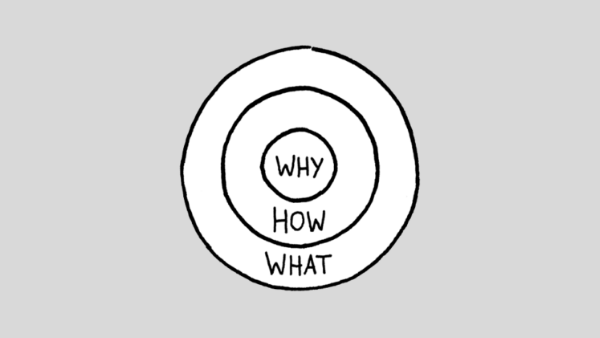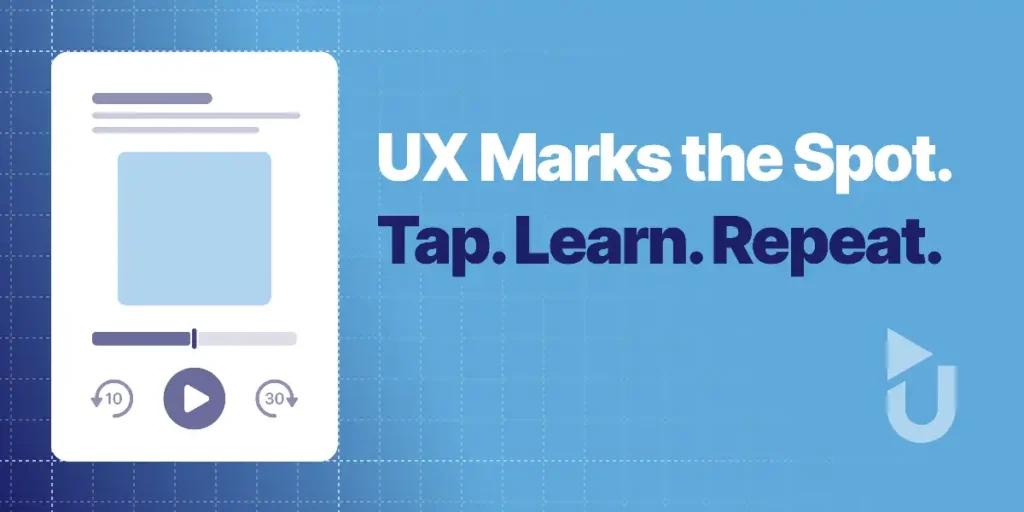The Golden Circle: How Focusing on the “Why” Inspires Your Workforce
uStudio Staff | Podcasting

In a recent podcast episode of our show Podcast on Podcasting, Dr. Art Markman explained how leaders can inspire and educate their workforce by using “Why” knowledge in their corporate podcasts. Over 9 years ago, motivational speaker Simon Sinek explained the “Why” in the third-most watched Ted Talk of all-time. “How Great Leaders Inspire Action” from TedxPuget Sound is where the term “The Golden Circle” was coined.
The Golden Circle
You see this all the time in the business world. How are some companies performing so much better than others, even though they essentially sell the same products and have the same capabilities? How are some leaders able to get their workforce motivated while others struggle, even though they have the same experience levels, expertise, and skill? It’s in the way they utilize internal communication. Called “the world’s simplest idea” by speaker Simon Sinek, The Golden Circle consists of “What,” “How” and “Why.”
The “What” circle is the outer ring. It is the area that holds what you do, what your company does, and what products you sell. Everyone in your company knows this information. For example, you can ask an employee what your company does, and they’ll respond, “we make computers.”
The “How” circle is the middle ring. It explains your processes and procedures. Most people have the “How” knowledge. They know how things work in your company. If you ask an employee how your company makes computers, they will respond, “we engineer great designs that are user-friendly.”
The “Why” circle is the inner circle. Why is your company doing what it does? What is its purpose? “Why” knowledge is not as well known as “What” or “How.” It’s harder for employees to understand if it’s not emphasized within the company. An employee might say “our goal is to make a profit,” but that isn’t an inspirational mindset. The company’s reason why should be “to advance technology, drive innovation, and solve problems around the world.” “Why” knowledge is sometimes left out because it is difficult to see a purpose other than “making money.”
Effective Internal Communication
According to Sinek, leaders that are not as effective typically communicate from the outside in. They start with the “What” and end with “How” since “Why” is not always apparent. If you take the statements above, that would translate to “We make computers by engineering great designs that are user-friendly.” That’s great, but what of it? Why should I believe in you? This statement is not inspirational or motivational.
If you go from the inside out, your message starts to sound like this: “We advance technology, drive innovation, and solve problems around the world by engineering great designs that are user-friendly.” It sounds completely different. This message is much more powerful. It inspires by focusing on why, convincing people of your mission and your purpose. They know why you’re doing things and how you’re doing it. Now all people will ask is “what are we doing?” This is the chance to expand. You don’t only make computers, but you also make phones, printers and tablets. They all have the same purpose, and you can insert anything in there and make people believe in what you are doing.
The Human Brain
You may be asking, how does Simon Sinek know that this actually works? Why does it work? According to him, it’s rooted in biology. The Golden Circle correlates with the human brain if you’re looking at it from the top-down.
The “What” circle lines up with the outer brain. This outer brain is capable of receiving and storing mass amounts of information. The “How” and “Why” match up with the limbic brain. The limbic brain drives all decision-making. It is the source of feelings and emotions, like trust and loyalty. The limbic brain is responsible for human behavior, which is why when you send messages beginning with and focusing on why your company does things, they’re more effective at being inspirational. People can process tons of information, but if they aren’t moved to change their behavior, then they won’t take action.
How to Appeal to your Workforce
Sinek mainly discussed the Golden Circle in a marketing standpoint. He focused on “how can we get this consumer to buy our product?” You may be thinking, this doesn’t really have anything to do with my company or internal communications. However, you can apply these same principles to your everyday messages, inside and outside of work.
Cognitive psychologist Dr. Art Markman stresses the importance of having “Why” knowledge present for company culture. In the workplace, many inspire action by having a consistent vision and mission statement. These are the “Why” statements for your company, and it is well-known to all employees. Setting a vision that focuses on “Why” motivates your employees and gets them excited about their work. They can see the basis and goal of their tasks, and the message can resonate with them.
Another instance where “Why” knowledge is powerful is when your company is going through change management. Dr. Art Markman tells us that companies and leaders are great at communicating that there is going to be a change, but they aren’t as good as communicating why they are changing and what the benefit is. It’s harder for employees to accept change if they can’t understand the reasoning behind it. They need reasons why to make them believe that the change is beneficial. Speaking from the inside of the Golden Circle helps inspire your workforce and spark the change that you need.
How do you communicate this “Why” knowledge? Podcasting is a great platform for communicating messages that tap into emotion or “Why” messages. They’re much more effective at conveying feeling, which, as mentioned earlier, drives decision-making and behavior. You may have your “Why” knowledge ready, but you have to be able to send it out to your whole workforce.
In the words of Sinek, “people don’t buy what you do; they buy why you do it.” People won’t believe in what you’re doing, but they will believe in why you’re doing it.


